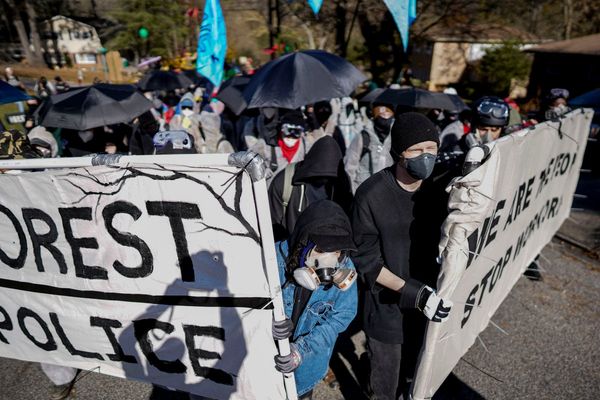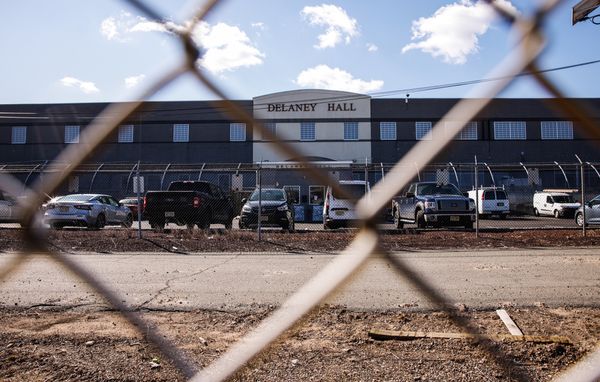
With Tesla (TSLA) stock soaring to unprecedented levels, it can be challenging to remember that the electric vehicle (EV) producer didn’t always have such strong growth prospects.
💰💸 Don’t miss the move: SIGN UP for TheStreet’s FREE Daily newsletter 💰💸
In 2008, things looked extremely different for Tesla. It was so different, in fact, that Tesla was facing the possibility of having to declare bankruptcy.
Elon Musk has described it as the worst year of his life due to the significant financial difficulties that plagued Tesla and SpaceX. The CEO has shared that he used the last of his remaining funds from his time at PayPal to keep the company afloat.
However, he ultimately turned to a different source to procure the funds he needed to keep the lights on for Tesla and received a funding package from a source that Musk has since criticized for offering these types of subsidies. This cash influx helped Tesla continue operations long enough to go public.

The Tesla bankruptcy that almost was
Following the financial crisis of 2008 that led to the Great Recession, many companies found themselves facing an uphill battle, including General Motors (GM) and Chrysler.
Tesla was by no means the only one with financial difficulties, but as a relatively new startup at the time, its future appeared highly uncertain, especially as leading automakers were struggling significantly.
Related: Tesla robotaxis are coming in 2025 with an unexpected addition
It should be noted that in late December 2008, Musk received a $40 million loan from private investors. This helped Tesla sustain operations in the short term, but on January 20, 2010, Tesla received a $465 million loan from the United States federal government, granting it a lifeline until Tesla’s initial public offering (IPO) six months later.
Tesla’s funding package came from the $465 million loan from the U.S. Department of Energy as part of the Advanced Technology Vehicle Manufacturing (ATVM) program.
Under the Energy Independence and Security Act (EISA) of 2007, the U.S. government established this initiative to help spur domestic manufacturing of advanced technology vehicles, including EVs and hybrids.
In the months that followed, Tesla opted to go public and enjoyed an extremely successful IPO. On its first day, TSLA stock closed trading up 40% from its initial price of $17 per share. From there, Tesla achieved enough sales to repay the loan in less than four years, marking an early success for the company.
Related: Flying car and self-driving vehicle makers are targeting a new city
When Tesla announced that it had successfully paid back what it owed, Musk issued the following statement:
“I would like to thank the Department of Energy and the members of Congress and their staffs that worked hard to create the ATVM program, and particularly the American taxpayer from whom these funds originate. I hope we did you proud.”
In the years that followed, Musk’s other companies would also benefit from government subsidies. The Los Angeles Times conducted an investigation in 2015 and found that Tesla, SpaceX, and SolarCity, now a Tesla division, had received “$4.9 billion in government support” up to that point, according to its data.
More Tech Stocks:
- New trade war with China could be a major blow to top tech stocks
- UnitedHealthcare spotlight reveals pivotal AI failure
- Tesla robotaxis are coming in 2025 with an unexpected addition
Now, almost a decade later, Musk has adopted a highly critical view of government subsidies despite the benefits that they have provided for his companies, including helping Tesla avoid bankruptcy.
Musk’s newest venture is reducing government spending
When he thanked the Department of Energy for the loan, Musk clearly appreciated the federal government program from which his company significantly benefited.
But years later, he is gearing up to head Donald Trump’s new Department of Government Efficiency (DOGE), in which he will work with fellow Republican businessman Vivek Ramaswamy to reduce government spending.
Details are still emerging about which departments will be most impacted by Musk and Ramaswamy’s plans to overhaul the federal government.
As government spending tracker USAspending.gov shows, though, the Department of Energy, which provided Musk’s company with relief if needed, ranks among the top 15 government agencies by budgetary resource.
Related: Fintech startup is helping people invest in SpaceX
Musk could be about to cut funding for a government agency he once publicly thanked, essentially acknowledging the benefit it provided for the company that made him wealthy and ultimately helped him achieve the world’s highest net worth. His actions as co-head of DOGE could ensure that other companies don’t receive the same treatment.
Climate Power looked at Musk’s plans for agencies like the DOE and assessed his potential incentives.
“As the Department of Energy is working to support American manufacturing and auto workers,” the outlet notes, “Musk’s co-chair Vivek Ramaswamy has repeatedly singled out loans provided to other EV companies that compete with Musk’s company, saying the loans should be “rescinded.”
Related: The 10 best investing books (according to stock market pros)







